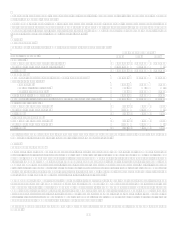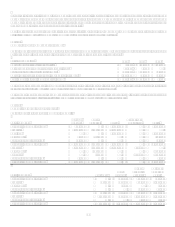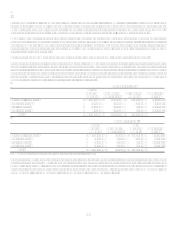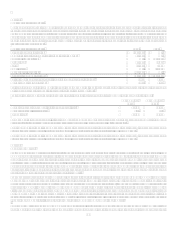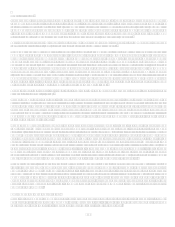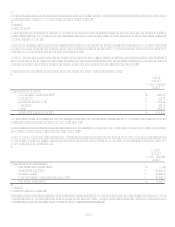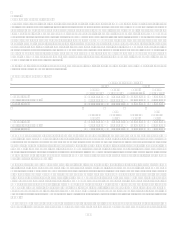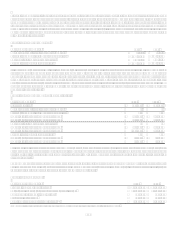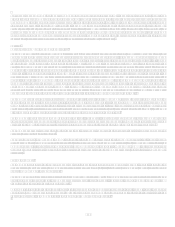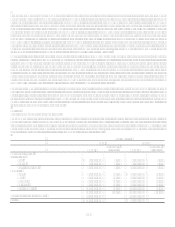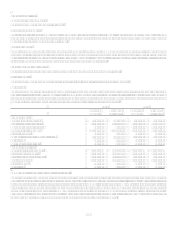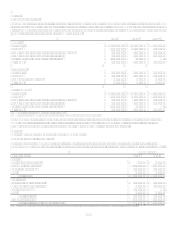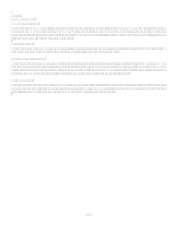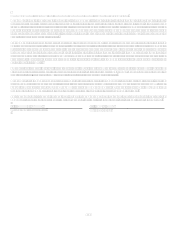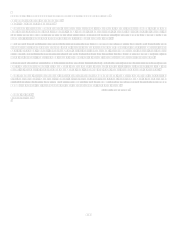Capital One 2007 Annual Report Download - page 126
Download and view the complete annual report
Please find page 126 of the 2007 Capital One annual report below. You can navigate through the pages in the report by either clicking on the pages listed below, or by using the keyword search tool below to find specific information within the annual report.104
For the year ended December 31, 2007 the Company recognized gross gains of $63.8 million on the sale of $12.6 billion of loan
principal receivables compared to gross gains of $50.4 million on the sale of $12.3 billion of loan principal receivables for the year
ended December 31, 2006 and gross gains of $58.2 million on the sale of $9.5 billion of loans in 2005. These gross gains are included
in servicing and securitizations income. In addition, the Company recognized, as a reduction to servicing and securitizations income,
upfront securitization transaction costs and recurring credit facility commitment fees of $45.0 million, $66.1 million and $48.6 million
for the years ended December 31, 2007, 2006 and 2005, respectively. The remainder of servicing and securitizations income
represents servicing income and excess interest and non-interest income generated by the transferred receivables, less the related net
losses on the transferred receivables and interest expense related to the securitization debt.
Note 25
Derivative Instruments and Hedging Activities
The Company maintains a risk management strategy that incorporates the use of derivative instruments to minimize significant
unplanned fluctuations in earnings caused by interest rate and foreign exchange rate volatility. The Companys goal is to manage
sensitivity to changes in rates by hedging the repricing or maturity characteristics of certain balance sheet assets and liabilities, thereby
limiting the impact on earnings. By using derivative instruments, the Company is exposed to credit and market risk on those derivative
positions. The Company manages the market risk associated with interest rate and foreign exchange contracts by establishing and
monitoring limits as to the types and degree of risk that may be undertaken. Credit risk is equal to the extent of the fair value gain in a
derivative, if the counterparty fails to perform. When the fair value of a derivative contract is positive, this generally indicates that the
counterparty owes the Company, and, therefore, creates a repayment risk for the Company. When the fair value of a derivative
contract is negative, the Company owes the counterparty, and therefore, has no repayment risk. The Company minimizes the credit (or
repayment) risk in derivative instruments by entering into transactions with high-quality counterparties that are reviewed periodically
by the Companys Asset and Liability Committee, a committee of Senior Management. The Company also maintains a policy of
requiring that all derivative contracts be governed by an International Swaps and Derivatives Association Master Agreement;
depending on the nature of the derivative transaction, bilateral collateral agreements may be required as well.
The Company periodically uses interest rate swaps as part of its interest rate risk management strategy. Interest rate swaps generally
involve the exchange of fixed and variable rate interest payments between two parties, based on a common notional principal amount
and maturity date. As a result of interest rate fluctuations, hedged assets and liabilities will appreciate or depreciate in market value.
To the extent that there is a high degree of correlation between the hedged asset or liability and the derivative instrument, the income
or loss generated will generally offset the effect of this unrealized appreciation or depreciation.
The Companys foreign currency denominated assets and liabilities expose it to foreign currency exchange risk. The Company enters
into various foreign exchange derivative contracts for managing foreign currency exchange risk. Changes in the fair value of the
derivative instrument effectively offset the related foreign exchange gains or losses on the items to which they are designated.
The Company has non-trading derivatives that do not qualify as hedges. These derivatives are carried at fair value and changes in
value are included in current earnings.
The Asset and Liability Management Committee, as part of that committees oversight of the Companys asset/liability and treasury
functions, monitors the Companys derivative activities. In accordance with the Companys asset/liability management policies, the
Company reviews its risk profile on a monthly basis. The Companys Asset and Liability Management Committee is responsible for
approving hedging strategies. The resulting strategies are then incorporated into the Companys overall interest rate risk management
strategies.
Fair Value Hedges
The Company has entered into forward exchange contracts to hedge foreign currency denominated investments against fluctuations in
exchange rates. The purpose of the Companys foreign currency hedging activities is to protect the Company from the risk of adverse
effects from movements in exchange rates.
The Company has also entered into interest rate swap agreements that modify the Companys exposure to interest rate risk by
effectively converting a portion of the Companys public fund certificates of deposit, senior notes, and U.S. Agency investments from
fixed rates to variable rates over the next ten years.
Adjustments related to the ineffective portion of the fair value hedging instruments are recorded in interest income, interest expense or
non-interest income depending on the hedged item. For the years ended December 31, 2007 and 2006, net gains or losses related to the
ineffective portion of the Companys fair value hedging instruments were not material.


